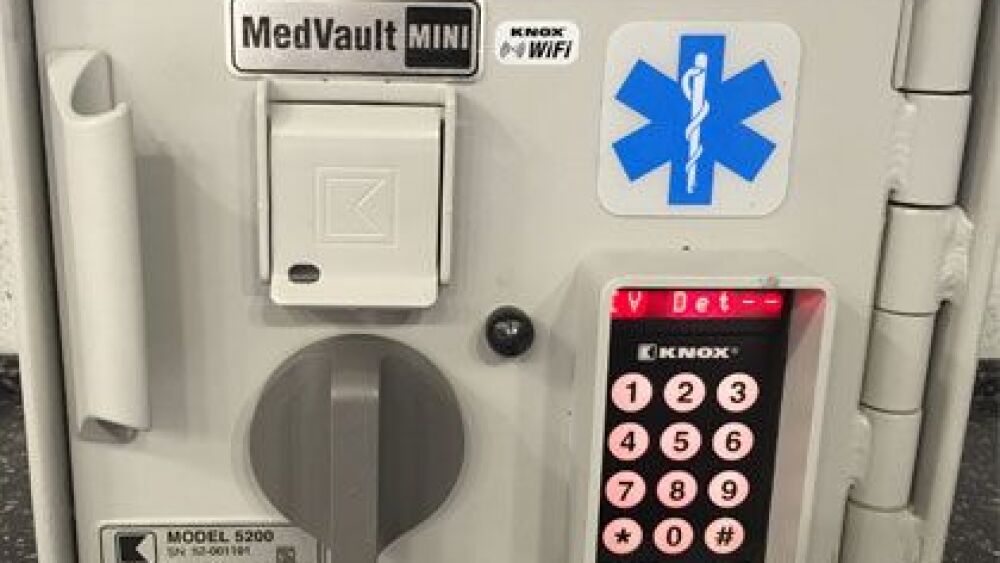By Ryan Stark
It is ironic that EMS providers who reverse drug overdoses with naloxone often have access to the same narcotic medications that cause drug addiction. The EMS industry is a key player in the fight against the opioid overdose epidemic, but the industry is not immune from it.
Nationwide, more than six out of 10 drug overdoses involve an opioid, such as fentanyl or morphine [1]. These opioids are still commonly used by EMS providers to treat patients in severe pain, and they can be diverted by anyone with access.
There are two important things every EMS agency should know:
- Drug diversion can have severe legal implications for diverter, the ambulance service and the service’s medical director.
- Drug addiction can affect anyone — young, old, new or veteran.
Drug diversion defined
Drug diversion is the tactful term used by the Drug Enforcement Agency for stealing medication. It is a misappropriation of controlled substances by providers for their own use.
It doesn’t matter whether a narcotic would have been wasted or whether someone was using the drug for a benevolent reason, such as treating the pain of a sick family member who couldn’t afford the medication. Controlled medications in EMS must only be used for patients in accordance with protocols.
Legal implications of drug diversion
Drug diversion can have serious implications not only for the individual who diverted the medication, but for the ambulance service and the service’s medical director.
1. The diverter
The person who diverted the medication could be subject to criminal liability for theft and other crimes related to misuse of a controlled substance, termination from employment, loss of licensure or certification or other severe penalties.
2. The ambulance service
If there is a specific rule governing the storage, wastage, tracking or reporting of a controlled substance that was not followed, it’s possible that the ambulance service could be penalized. Sanctions may include loss or suspension of licensure, administrative penalties or other consequences. Liability will depend upon the agency’s adherence to strict requirements, such as having required lockboxes, and whether the service took appropriate action upon learning about the diversion.
Ambulance services should also check if their state allows EMS agencies to register as a mid-level practitioner to dispense, administer or order controlled substances. Services need to be properly registered with applicable state and federal agencies for purposes of handling controlled substances.
3. Medical director
Many ambulance services obtain and administer controlled substances through their EMS medical director’s DEA number. This is typically the case when an ambulance service doesn’t have its own DEA number and the agency isn’t from a state that grants the authority to ambulance services to obtain and administer controlled substances.
The EMS medical director could face potential penalties if the ambulance service experiences a drug diversion, including sanctions against the medical director’s license or monetary penalties from the DEA. Like the ambulance service, whether a medical director might incur liability for a drug diversion depends on whether the medical director adhered to applicable legal requirements and whether he or she took appropriate steps upon learning about the diversion.
6 strategies to deal with and Prevent drug diversion
Here are six strategies for EMS leaders to understand, prevent and deal with drug addiction and diversion.
1. Audit and inspect frequently
All controlled substances should be audited on a regular basis to avoid larger problems. There have been cases where a service only conducted quarterly or annual audits of Schedule II substances, and by the time the diversion was discovered, a substantial amount of fentanyl or morphine had been diverted. Services should routinely check narcotic inventory and inspect controlled medications to ensure packing containers have not been tampered with.
2. Report diversion immediately
Upon discovering a diversion, the ambulance service will likely have to alert the state department of health and potentially the DEA. The ambulance service may also want to report the diversion to local law enforcement. Medical directors will likely have to report the diversion to the DEA, and potentially the state department of health. All parties must adhere to the strict reporting timelines.
3. Proper recordkeeping for opioids and narcotics
State departments of health and the DEA have strict recordkeeping requirements for scheduled medications and they should be precisely followed. There have been instances where medical directors were fined significant amounts by the DEA for failing to correctly complete things like the DEA Controlled Substances order form, Form 222. There should always be documentation of usage and wastage and resupply only upon documented usage.
4. Encourage reporting of Drug diversion
Ambulance services should have a policy that encourages reporting of known or suspected diversion and affords multiple channels to report drug diversion. For example, agencies have set up hotlines for employees to report diversion anonymously. Remind providers that they not only have a legal obligation to report, but that reporting drug diversion serves the safety interests of coworkers and the public at large.
5. Control narcotic access to everyone
Since we have no way of knowing who might divert or when, the best policy is to control everyone’s access to narcotics. Often individuals who divert narcotics are those who have unrestricted access to them. Ambulance services usually have systems that prevent providers from accessing controlled substances except when needed for patients. But what about supervisor access to restock cabinets?
Use systems that require the presence of two individuals whenever narcotics are being restocked. For example, some agencies use an electronic lock that requires two separate combinations, codes or electronic key cards. No single person should have unrestricted access to the narcotics restock. In addition, all narcotics wastage should be witnessed and documented.
6. Talk to employees
Employees who are under a lot of stress or who have recently stopped taking prescribed pain medication are more likely to engage in diversion. Approach your employees in the tough times before something happens. Ask them if there is anything you can do to help.
Reference
1. Centers for Disease Control and Prevention. Morbidity and Mortality Weekly Report. Increases in Drug and Opioid Overdose Deaths — United States, 2000–2014 http://www.cdc.gov/mmwr/preview/mmwrhtml/mm6450a3.htm?s_cid=mm6450a3_w













